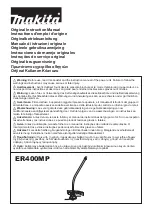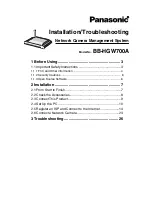
Merlin CH4CO
User Guide
Rev: 07 05-19
5
3
Methane / Natural Gas (NG) – General Information
Methane gas comes from the earth and it comes from our bodies. Methane is non-toxic and it
can be harnessed as an energy source. However, methane is highly explosive and it can cause
death by asphyxiation. It is important to understand how to deal with the hazards associated
with methane.
Although methane on its own isn't poisonous, it has the potential to become poisonous when
mixed with other substances. That potential exists when natural gas (NG), which is 97%
methane, is burned in houses, offices and businesses. The burning of natural gas without proper
ventilation can produce carbon monoxide, a deadly gas that is difficult to detect.
SYMPTOMS OF METHANE EXPOSURE
Methane gas is relatively non-toxic and associated with being a simple asphyxiator displacing
oxygen in the lungs. However Methane is extremely combustible.
Exposure to high levels of Methane can cause:
Suffocation
Loss of consciousness
Headache and dizziness
Nausea and vomiting
Weakness
Loss of co-ordination
Increased breathing rate
METHANE LEL% LEVELS
The LEL (Lower Explosive Limit) of methane is considered to be 5% BV (by volume of air).
So we call 5% BV (by volume) the same as 100% of the LEL (Lower Explosion Limit).
Your device will monitor the level of natural gas in the area referred to as LEL% (a percentage
of the LEL) and will alarm at 10% LEL.
For more information, please visit our website or contact your supplier.


























